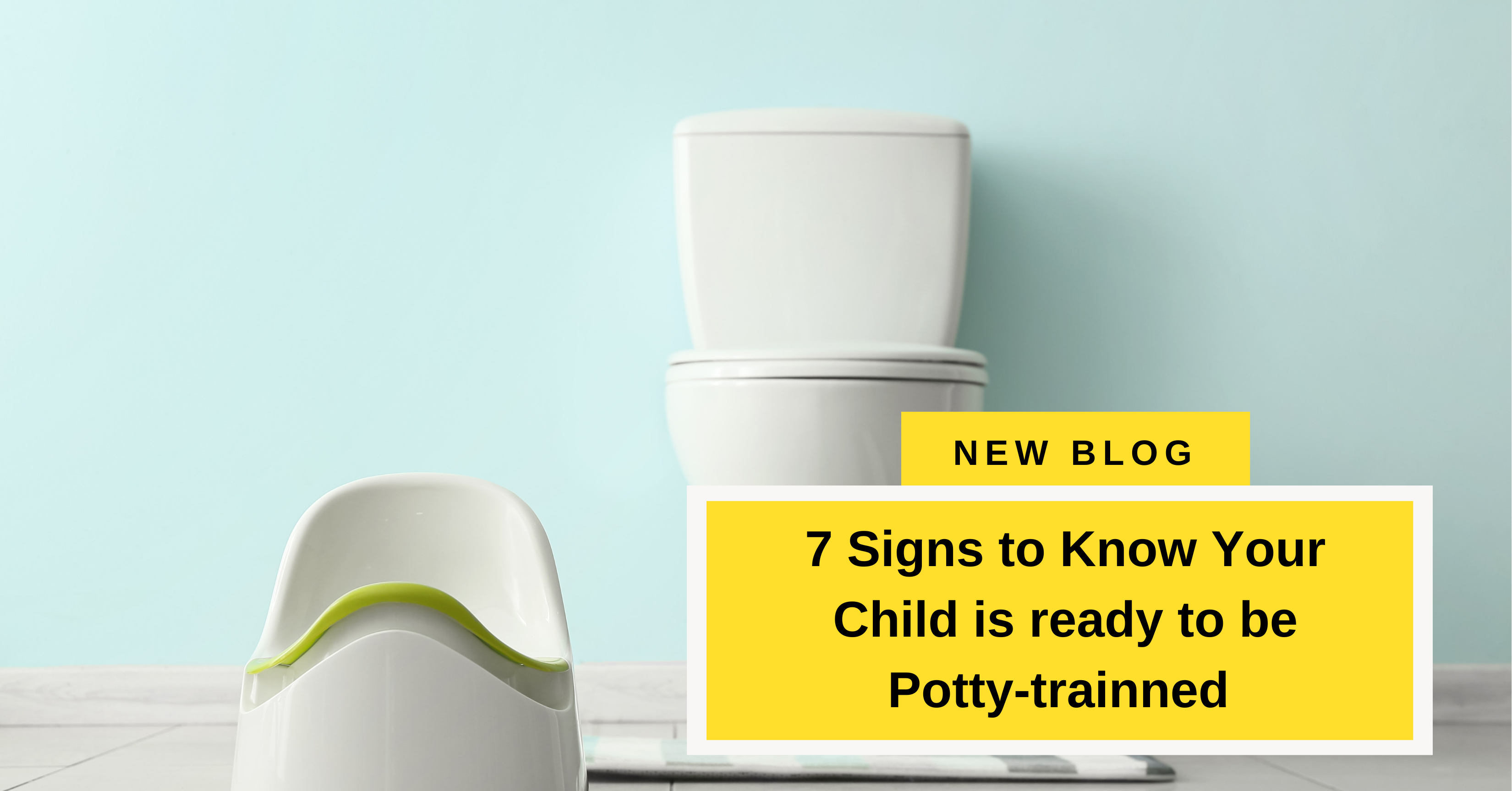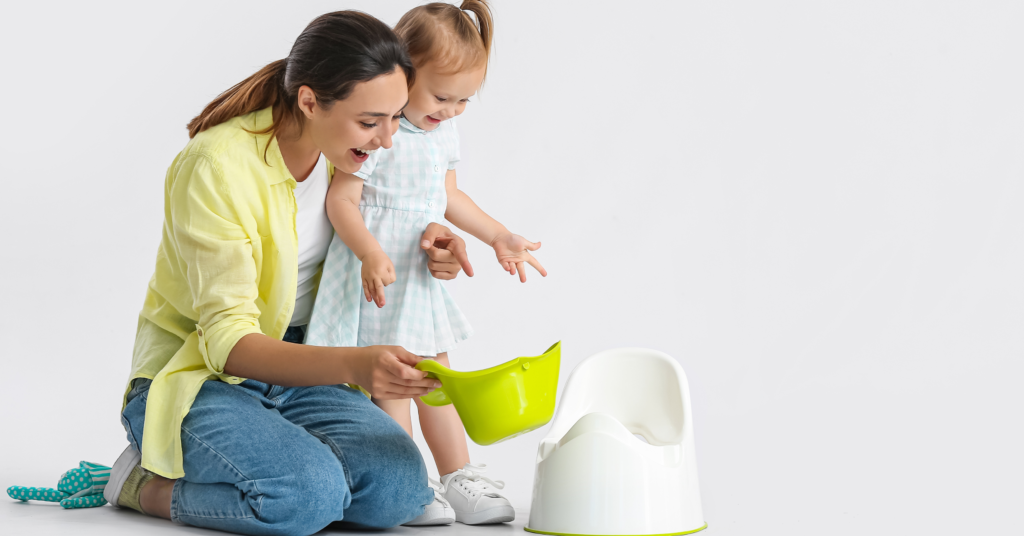
The journey of potty-training is a Huge milestone for both children and parents alike. It’s a time of transition and growth. As a parent or Caregiver, recognizing the opportune moment to initiate this adventure can make the process a lot easier.
Let’s explore the Seven signs that indicate a child is ready to take this step.
By understanding and acting on these cues, we aim to equip parents and caregivers with the insights they need to ensure a smoother and more effective potty-training experience.

- Ability to Follow Simple Instructions: A Child might be ready for potty training when they can understand and carry out basic commands or directions.
As this is a positive sign that they have developed some level of cognitive and language skills needed for potty training.
However, the child doesn’t need to perfectly follow every instruction, but showing an increasing ability to understand and respond to simple commands suggests that they are becoming more capable of understanding the process of using the potty. - Showing Discomfort with Dirty Diapers: Children can manifest this behaviour in four different ways:
They might become fussy, cranky, or irritable when their diaper is wet. This behavior could be a response to the discomfort caused by the wetness.
The child may try to pull or tug at their diaper, indicating that they are aware of its condition and are uncomfortable with it.
The child might vocalize their discomfort by whining, crying, or making other unhappy sounds when their diaper is wet or dirty.
Some children may point to their diaper area or use specific gestures to communicate that something is wrong.
When a child displays these behavior, it can be a positive sign that they are starting to recognize the need for a diaper change, which is a step towards readiness for potty training. - Imitation: Children are naturally curious and eager to imitate the people around them. If a child observes adults or older siblings using the toilet, they might become interested in trying it out themselves.
They might watch the flushing, the act of washing hands, and other bathroom routines, and may want to participate in these activities.
This imitation shows that the child is paying attention to what happens in the bathroom and is becoming aware of the concept of using the toilet for waste elimination. - Increased Interest: The child may start asking questions about what happens in the bathroom, why grown-ups use the toilet, or what the potty chair is for.
Children may want to explore the bathroom area, the toilet, or the potty chair, showing a natural curiosity about these objects.
They might engage in imaginative play where they mimic using the toilet or potty chair with their toys or dolls.
This increased curiosity and attention indicate that the child is becoming aware of this aspect of daily life and might be mentally preparing themselves for the transition from diapers to using the toilet. - Desire for Independence: When it comes to potty training, a child who is showing a desire for independence might start to resist being changed or having their diaper put on.
They may express frustration when they can’t control this aspect of their routine.
This desire for autonomy can be a positive sign that they are mentally and emotionally ready to take on the challenge of using the potty. As a parent or caregiver, you can harness this readiness by involving the child in the process of potty training.
Letting them participate in choosing their own potty chair, picking out training pants with fun designs, and allowing them to flush and wash their hands afterward can all help them feel more in control and motivated to use the potty. - Staying Dry for Longer Periods: When a child is able to stay dry for a few hours at a time, it suggests that their bladder has grown stronger and can hold a larger amount of urine.
This readiness is important for successful potty training, as the child needs to have enough bladder control to be able to hold urine until they reach the toilet.
Staying dry for longer periods also indicates that the child’s body is starting to coordinate better between the bladder muscles and the brain’s signals. This coordination is crucial for recognizing the sensation of a full bladder and being able to respond by using the toilet.
However, it’s important to note that the age at which children reach this milestone can vary widely. Some children may achieve this readiness around 18 to 24 months, while others might not be ready until closer to 3 years of age. It’s important to observe your child’s individual. - Telling You before they go: This can manifest in various ways, such as the child verbally letting you know they need to use the toilet, making a specific gesture, or even using certain words to indicate their intention.
For example, a child might say something like “I need to use the potty” or “I have to go pee.” They might also have a unique way of letting you know, like holding their diaper area, doing a potty dance, or using a specific phrase that you’ve associated with needing to use the toilet.
Potty training is more than a practical milestone; it’s a testament to the power of patience, encouragement, and understanding.
Each step taken in this journey has been an investment in their well-being and their ability to navigate the world with newfound independence.
And Through it all, we’ve discovered that potty training is not just about teaching a skill; it’s about building connections, deepening understanding, and laying the foundation for a harmonious partnership between parents /caregivers and their growing children.
Did you find these tips helpful? leave your feedbacks below

Leave a Reply